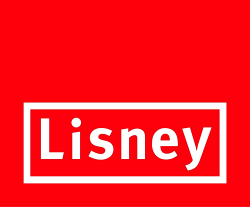
Thankfully the office sector is probably one of the better performing sectors but like all markets, activity can be sporadic and at times confusing.
As we reach the mid-point of the year, approximately 56,097 sqm of accommodation has been transacted, which frankly is disappointing. Activity over the second quarter of the year was much the same as the first quarter and looking towards the end of the year it is now unlikely that the level of transactions completed during 2012 will match what was done in 2011 where transactions totaled 164,000 sqm.
On the positive side, there are plenty of enquiries from strong international brand names seeking accommodation and those close to concluding transactions or rumored to be in the market include Amazon, SAP, Score Reinsurance, Facebook, Twitter, Deutsche Bank, NIB, Bank of New York Mellon, Yelp, Microsoft and Capita. All in all, it is an impressive line-up of potential occupiers.
Indeed from our own point of view we are currently representing 25 separate corporate occupiers who have a minimum combined requirement of approximately 38,000 sqm. Yet despite all of this activity, we are still a little nervous about where the market is going.
Part of this nervousness comes from the real lack of activity from indigenous businesses and it is now clear that the majority of enquiries for space are on behalf of businesses that do not derive their income from providing services to the Irish market and are instead providing internationally traded services from within Ireland to overseas markets.
Active tenants are predominantly in the information and technology sectors, and represent 21% of all activity for the year to date. More importantly, they are the predominant sector with active ongoing requirements. Surprisingly financial services companies represent approximately 22% of all activity to date. Occupiers within this sector who have completed transactions so far this year include Towers Watson (2,053 sqm at Trinity Point) BNP Paribas (1,747 sqm also at Trinity Point) and AIB (2,539 sqm in Hume House).
The overall Dublin vacancy rate is 19.4% and the city centre vacancy rate is 16.1%, both of which are down almost a percent since quarter one. There is no construction activity and little second hand supply coming to the market. As the year progresses, we anticipate that the city centre vacancy rate will fall below 15% and the overall vacancy rate may end up somewhere between 17.5% and 18%.
There is still a considerable quantum of accommodation of vacant space being offered for let or for sale (687,830 sqm). The city centre vacancy amount totals 360,912 sqm and of this we estimate that 28% can be considered obsolete or nearing obsolescence. This has an affect of somewhat distorting the city vacancy levels.
Consequently, there has been a significant downward shift in rental levels since the 2007 peak and Lisney research shows that office rents have fallen by 56% in the general Dublin area. However, according to our rental indices, the market has now bottomed out and rents have begun to stabilise.
Despite this, it remains a tenant’s market and most occupiers will accept leases for no longer than 10 years, often with break options. In the city centre, prime grade A rents rarely exceed €30 per sqft and in certain suburban locations rents can be less than half of city centre rents. In addition, occupiers are also getting rental incentives in the form of rent free periods and in certain cases these can be as much as twelve months for every five years of lease commitment.
Current rents do not justify the build costs. In economic terms this would suggest an over-correction in the market.
Therefore, there will be no construction of any new office accommodation until rental terms improve or unless occupiers are willing to pay a rent that justifies the cost of providing the space.
In the interim period, new supply will only come from companies downsizing or pulling out of the market. However we believe that most businesses have already addressed their head count issues. As a consequence of this, there has been for some time a focus on refurbishing older city centre buildings.
Recent examples of buildings for sale include Grattan House on Grand Canal Street (3,929 sqm), Hibernian House on Haddington Road (1,417 sqm), the former AON Building at 1 Clanwilliam Court on Lower Mount Street (3,033 sqm) and the fomer McConnells Advertising premises near Charlemont Street (1,647 sqm). In addition, NAMA recently announced a €2bn investment fund to include no doubt some refurbishment of older buildings.
Over the next 18 months, we believe that activity will remain moderate. However, due to the lack of new supply, we forecast double digit rental growth in key city centre locations. When this happens it may take many by surprise.







